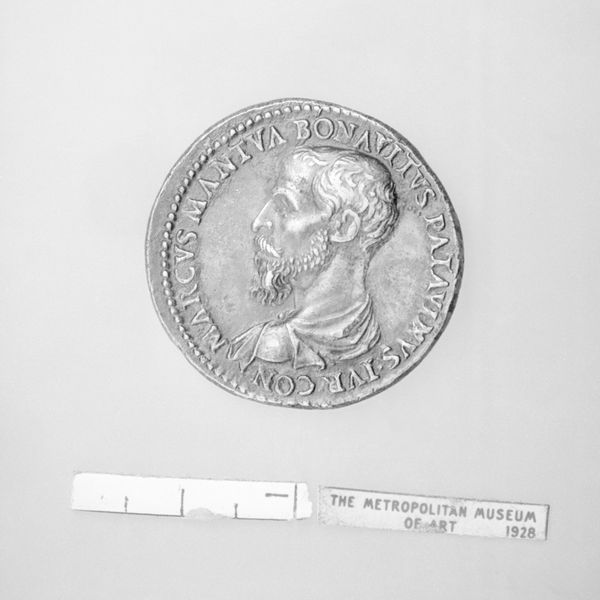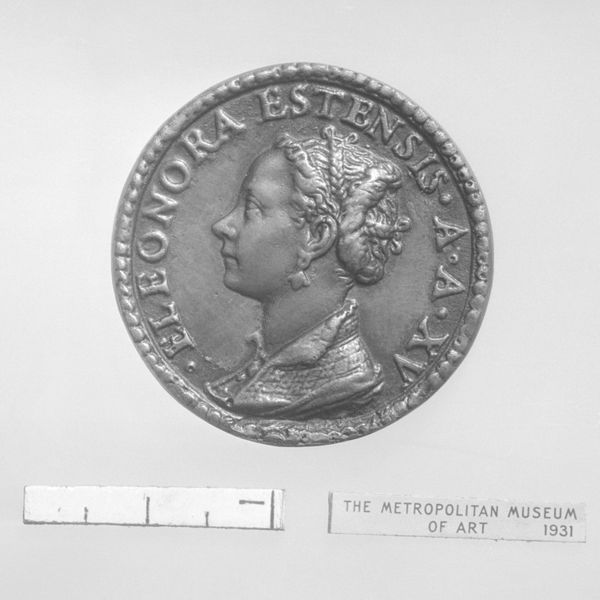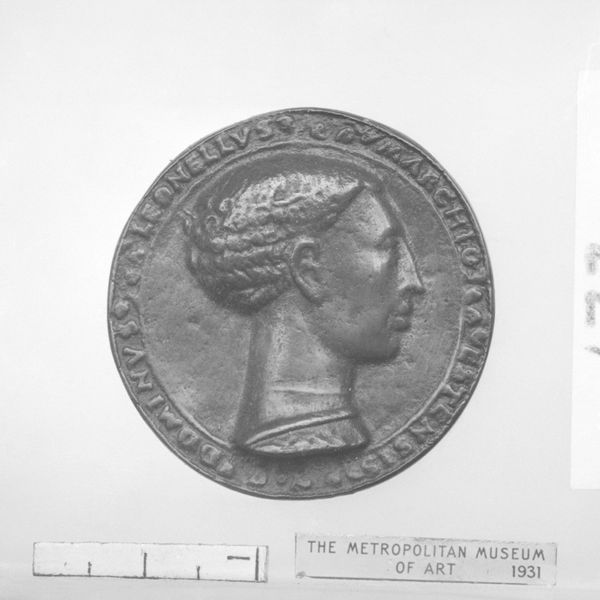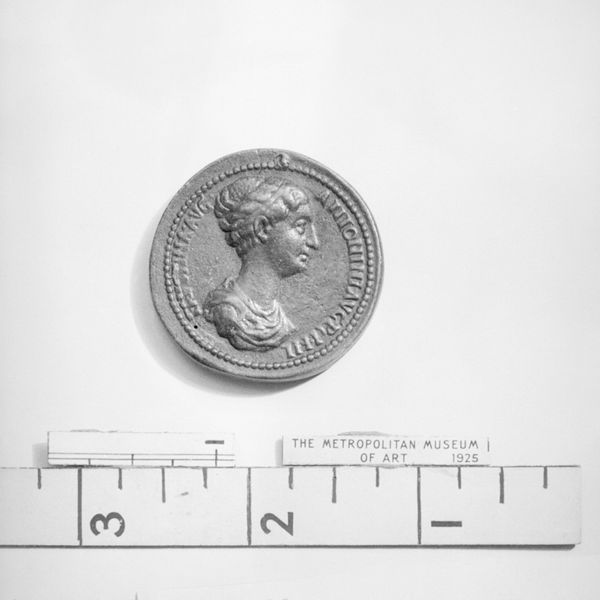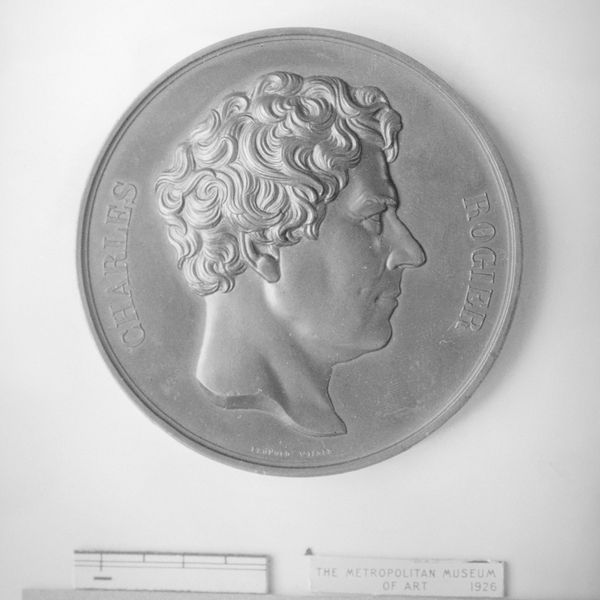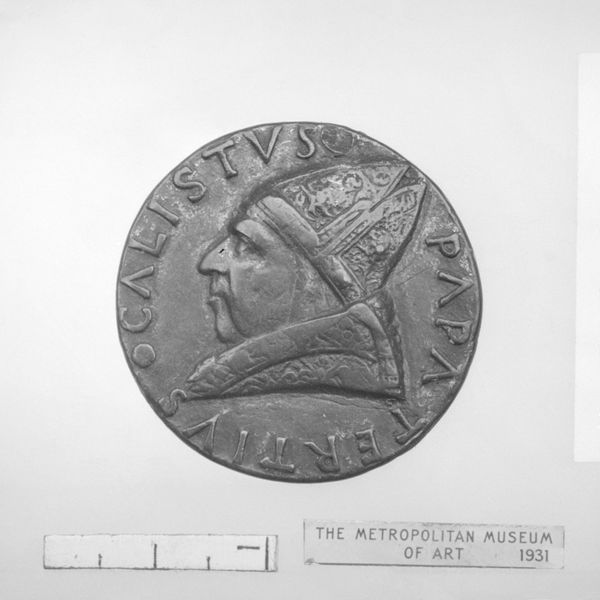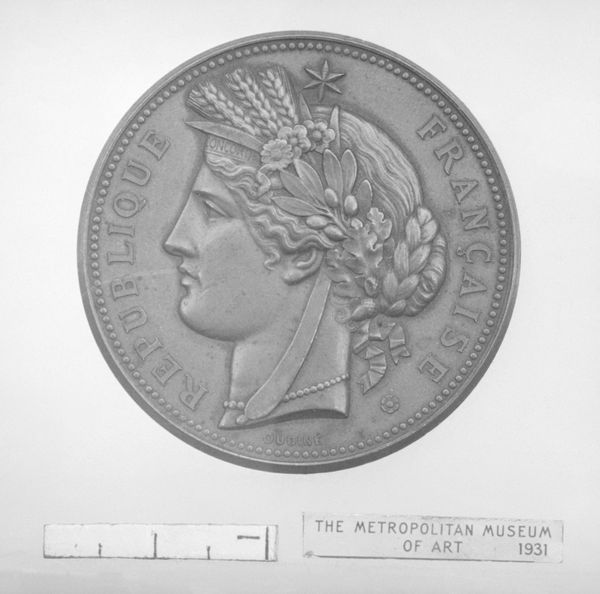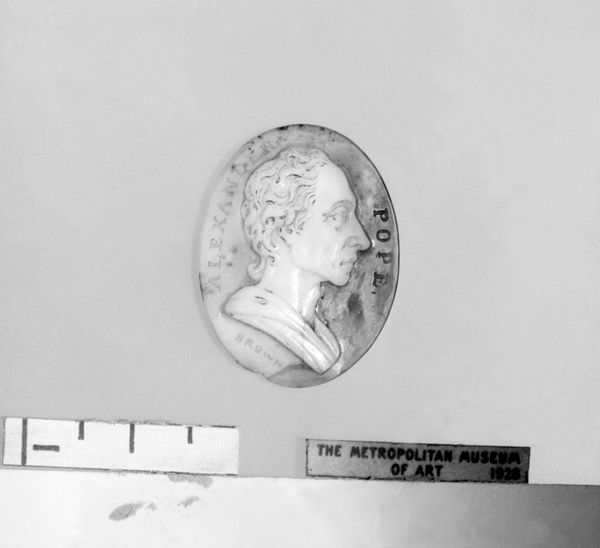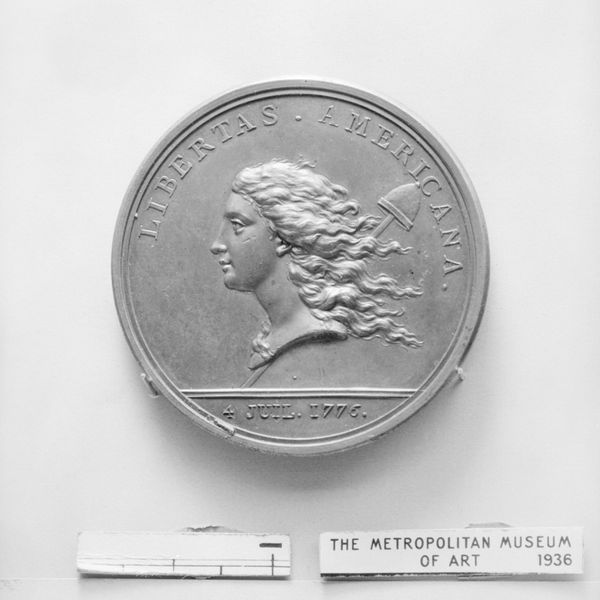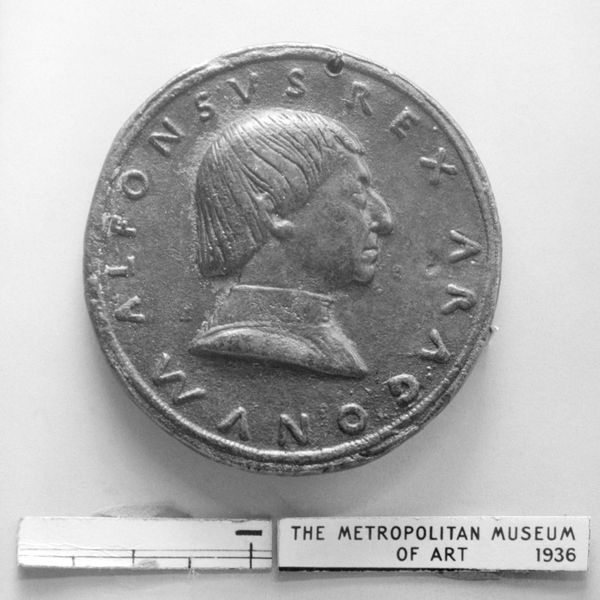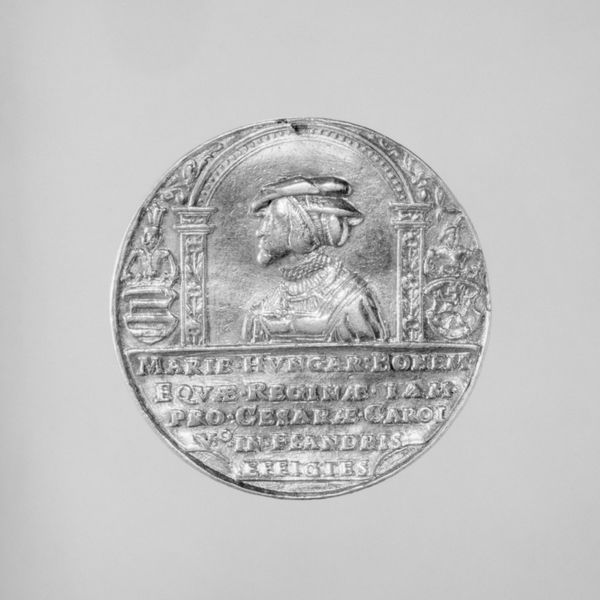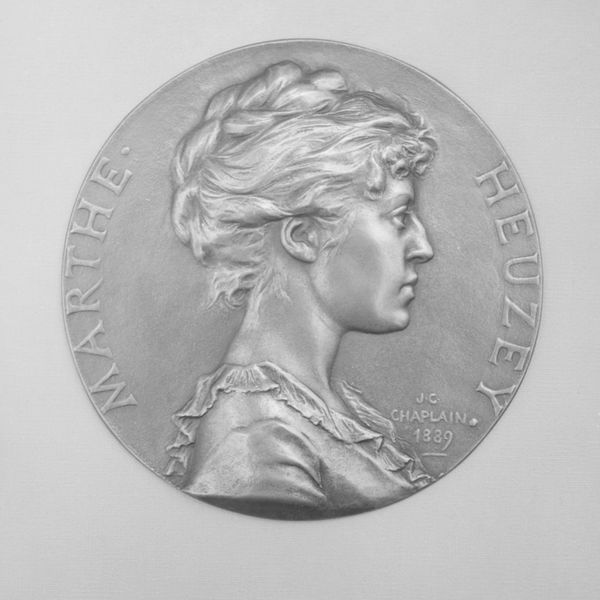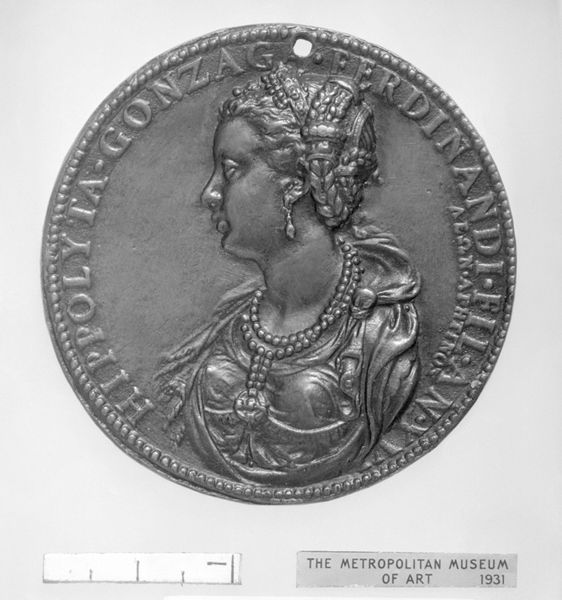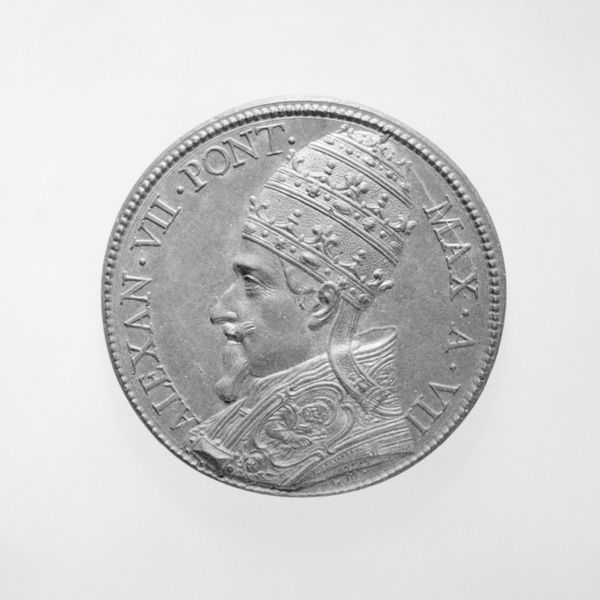
Commemorating the Agricultural Assembly of Amiens 1860s - 1870s
0:00
0:00
carving, metal, sculpture
#
portrait
#
medal
#
carving
#
metal
#
greek-and-roman-art
#
sculpture
#
carved
#
decorative-art
#
profile
Dimensions: Diameter: 1 1/4 in. (3.2 cm)
Copyright: Public Domain
Curator: Initially, I’m struck by the stillness, the almost unnerving calm radiating from this portrait. Editor: And it’s a portrait captured in metal. The piece is a sculpture dating from the 1860s to 1870s, known as “Commemorating the Agricultural Assembly of Amiens.” The artist behind it is René Dubois. It's currently residing at The Metropolitan Museum of Art. Curator: Metal as a medium lends it such an air of permanence. The profile is crisply rendered, the cool surface reflecting the light in subtle ways. The artist has meticulously carved the metal, creating soft textures for the hair in contrast to the hard, precise outline of the face. Note also the octagonal form; the figure contained by this shape. Editor: You know, looking at it, I almost feel as if I've stumbled upon a long-forgotten memory. This portrait--I imagine someone powerful or someone idealized in the eyes of those commemorating the Agricultural Assembly of Amiens. The figure gazes into a distance unseen to us. Who might she be? Is she a muse? Curator: Indeed. Observe how the choice of the profile format reinforces the impression of classical antiquity. Dubois certainly echoes the traditions of Greek and Roman art. The use of metal emphasizes its timeless quality. There's something both immediate and historical in its effect. Semiotically, each carefully rendered detail seems calculated to ennoble the sitter. Editor: Yes, the smooth carving contributes to that timeless beauty! I can almost see myself picking it up and admiring its lines and details for hours on end! Overall, I think that this lovely commemorative medal speaks about memory and about trying to capture moments and memorializing accomplishments for long afterward. What about you? Curator: I see the medal form as serving both commemorative and aesthetic purposes. It successfully conveys the gravity and optimism associated with such an agricultural assembly in the context of its time.
Comments
No comments
Be the first to comment and join the conversation on the ultimate creative platform.
